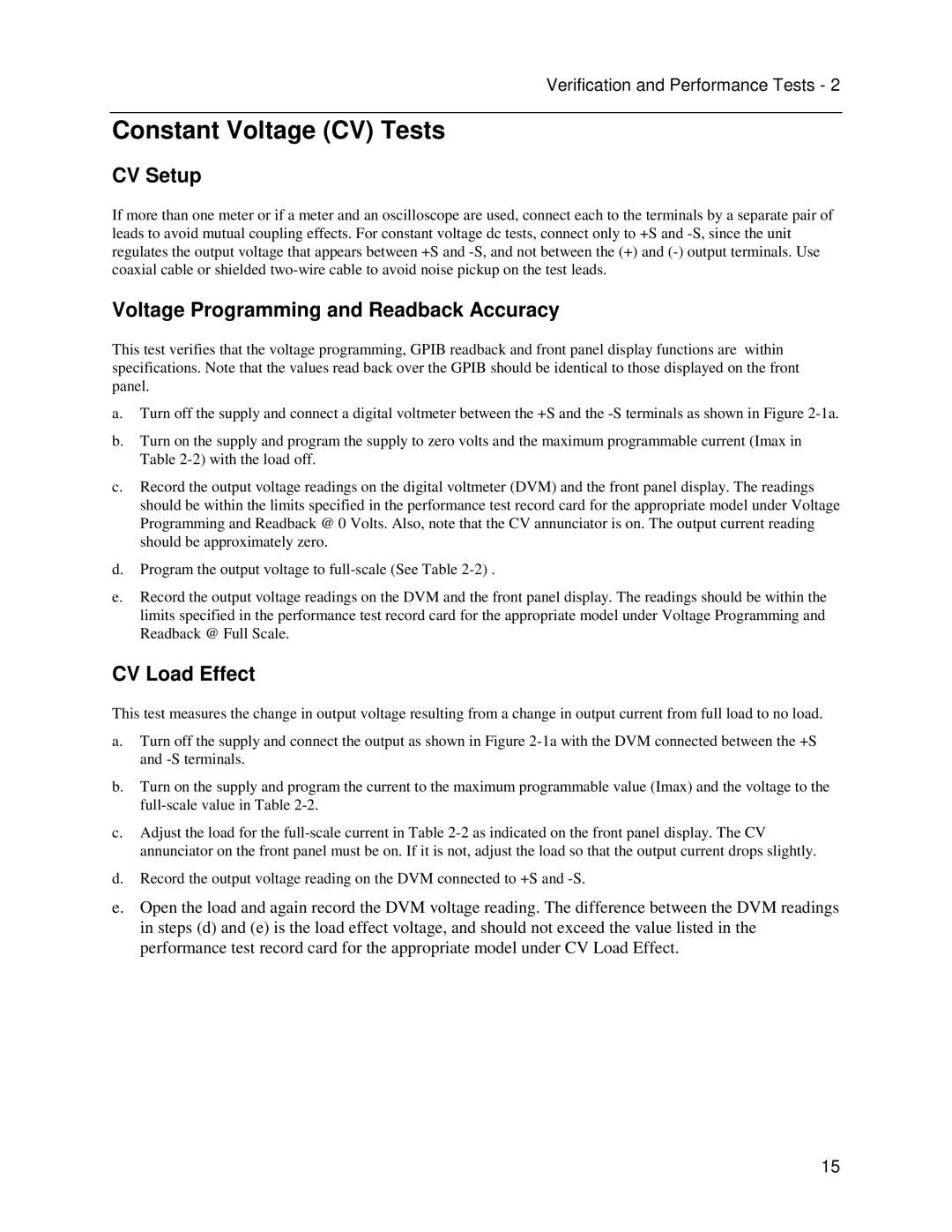Verification and Performance Tests - 2
Constant Voltage (CV) Tests
CV Setup
If more than one meter or if a meter and an oscilloscope are used, connect each to the terminals by a separate pair of leads to avoid mutual coupling effects. For constant voltage dc tests, connect only to +S and
Voltage Programming and Readback Accuracy
This test verifies that the voltage programming, GPIB readback and front panel display functions are within specifications. Note that the values read back over the GPIB should be identical to those displayed on the front panel.
a.Turn off the supply and connect a digital voltmeter between the +S and the
b.Turn on the supply and program the supply to zero volts and the maximum programmable current (Imax in Table
c.Record the output voltage readings on the digital voltmeter (DVM) and the front panel display. The readings should be within the limits specified in the performance test record card for the appropriate model under Voltage Programming and Readback @ 0 Volts. Also, note that the CV annunciator is on. The output current reading should be approximately zero.
d.Program the output voltage to
e.Record the output voltage readings on the DVM and the front panel display. The readings should be within the limits specified in the performance test record card for the appropriate model under Voltage Programming and Readback @ Full Scale.
CV Load Effect
This test measures the change in output voltage resulting from a change in output current from full load to no load.
a.Turn off the supply and connect the output as shown in Figure
b.Turn on the supply and program the current to the maximum programmable value (Imax) and the voltage to the
c.Adjust the load for the
d.Record the output voltage reading on the DVM connected to +S and
e.Open the load and again record the DVM voltage reading. The difference between the DVM readings in steps (d) and (e) is the load effect voltage, and should not exceed the value listed in the performance test record card for the appropriate model under CV Load Effect.
15
